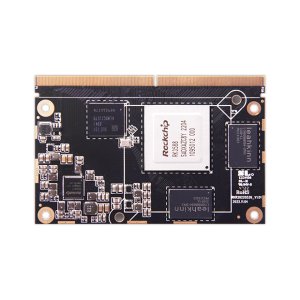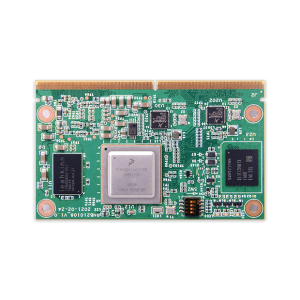The Benefits of Using Computer on Modules for Efficient Development
The Benefits of Using Computer on Modules for Efficient Development
Blog Article
When designing complex digital techniques, selecting the proper system on a module (SoM) may make or separate your project's success. A Process on Module is a lightweight enterprise panel property important parts just like the processor, memory, and energy management. Their modular nature simplifies style workflows, enabling quicker product progress while reducing complexity. But with a wide variety of options available, how will you select the right one? Below, we investigate key facets to consider.

Establish Your Task Demands
Before considering possibilities, it's vital to outline your project's unique needs. What functions must the last solution accomplish? Consider the kind of processor expected, the quantity of storage, and how many interfaces like USB, Ethernet, or PCIe needed. For instance, if your challenge centers around high-performance research, an SoM with a robust multi-core model (e.g., NXP i.MX series or NVIDIA Jetson Nano) might be ideal. However, for IoT purposes, give attention to decrease energy consumption and integrated wireless connection features.
Examine Handling Energy and Ability
The main processing system (CPU) of the component dictates their performance. Options range from energy-efficient ARM processors for lightweight or IoT devices to advanced x86 processors for AI workloads. Consider the computational demands of your application. For tasks involving edge AI tasks like video analytics, an element like the NVIDIA Jetson Xavier NX with GPU acceleration might be critical. For less intense workloads, ARM Cortex processors might suffice.
Factor in Scalability and Longevity
Engineering is constantly evolving. To future-proof your task, select an SoM with scalability in equally equipment and software. Adventures appropriate for numerous board models or giving wide-ranging operating-system support guarantee flexibility. Furthermore, choose companies committed to long-term access and timely software changes to extend your product's lifecycle.
Connectivity and Growth Alternatives
Modern tasks often demand varied connection alternatives to talk with receptors, peripherals, or cloud services. Measure the module's compatibility with Wi-Fi, Bluetooth, and other conversation interfaces. Similarly, pay attention to growth capabilities such as for instance GPIO pins or MIPI interfaces if you would like to integrate cameras, shows, or personalized parts in your design.
Budget Concerns
Ultimately, aspect in fees without compromising quality. Low-cost possibilities may save original costs but cause improved executive issues later. Balance affordability with supreme quality components and trusted seller help to ensure a hassle-free development process.
Choosing the right Program on Element is an ideal stage for any project. By carefully assessing these facets, you are able to guarantee that the next progress is not only effective but in addition scalable for potential needs. Therefore invest some time, study thoroughly, and make an educated decision to create your task up for success. Over all, selecting the most appropriate Process on Module is an essential part of any electronic design project.

By considering factors such as project requirements, handling power and potential, scalability and longevity, connectivity and growth possibilities, and budget criteria, you can make the best decision that'll fundamentally result in the achievement of your project. Bear in mind that each and every task is unique and could have different points when it comes to choosing an SoM. By maintaining these important facets in mind and carefully evaluating your alternatives, you can make certain that you choose the best SoM for your following project. Good luck! # Take note Report this page